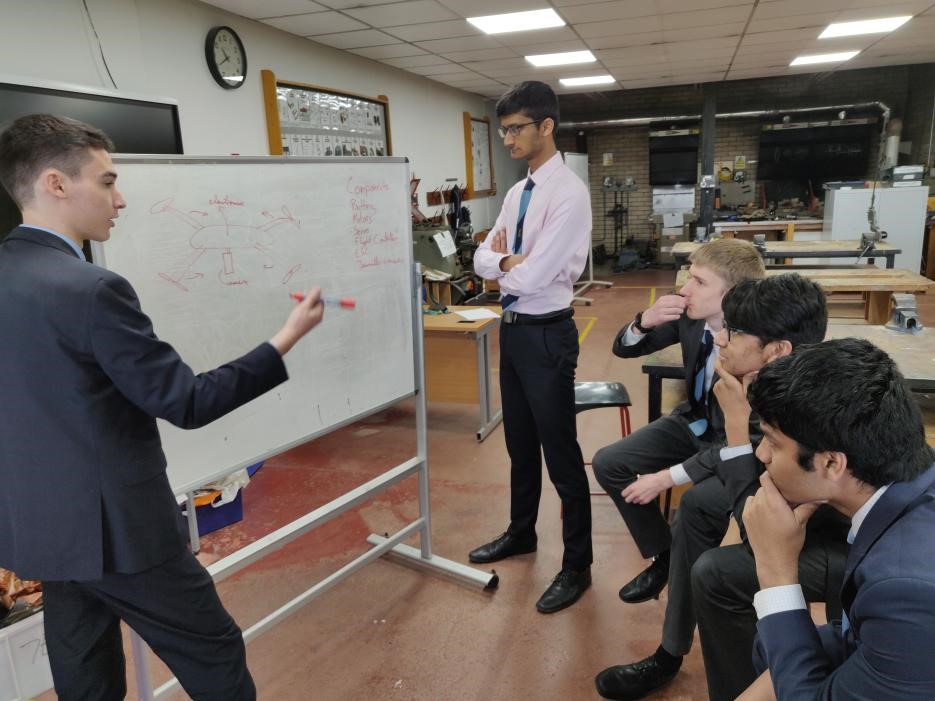As a country with a long tradition of innovation in science and technical instruction with a long history of STEM education and as the host of BIEA 2019 International STEM Youth Innovation Competition, Britain not only leads the number of participating teams in this competition but also has had a remarkable success in the preliminary rounds of the competition. One of the teams entering the final is Queen Elizabeth’s School in Barnet. The boy’s school was founded in 1573 under a charter granted by Queen Elizabeth the first and today, besides providing the traditional comprehensive education expected of a traditional grammar school, encourages inquiry into unmanned vehicle technology, VEX robotics and other cutting-edge technologies and has won many awards and international competition.
Regarding their interest in the competition the school science and technology department director, Michael Noonan, said that earlier this year one of his students, Aryan Jain, saw the notification of the BIEA international STEM competition whilst browsing the web and very quickly others became interested and a school team was formed to compete.
The teachers were very supportive of the student decision to enter the competition and encouraged them to explore their ideas independently. Michael Noonan said, “From the initial selection of animal species to the creation of the report and to the development of the UAV according to their designs, it was all the result of the team’s own little by little exploration and progression.”
The team is discussing their drone design
The team members are discussing which animal to choose to help protect. The team drew up a long list of endangered animals and explored the role drones could play in protecting them. As a result of the discussions the team members were enthusiastic to develop glider drones and choose an animal with a large distribution area hence the choice of the Black Rhino.
After referencing the relevant publications the team decided to use military surveillance techniques to aid in the protection of Black Rhinos. A complex equation derivation was successfully used to calculate the pixel resolution in the final design.
 The team is working together to remodel drone parts
The team is working together to remodel drone parts
The final report and submission for the competition final deadline coincided with school examinations. How not to interfere with study for the all-important examinations? The boys were very enthusiastic to enter their drone design in the competition but were as equally concerned to complete their studies for the examinations. To this end a detailed division of work to be done was scheduled to be carried out outside of study time. Two days before the report had to be submitted the team had to work more than 14 hours a day to complete it. The hard work paid off and the report was submitted on time.
Having reached the finals the team was so enthused that they decided to build their drone themselves in order to present their design to the fullest. This has increased the difficulty but is definitely well worth the extra effort.
 Team members are testing the drone design
Team members are testing the drone design
The team were divided into three sections, a group responsible for electronics, another responsible for the video and another responsible for the fuselage. The electronics group focused on providing the power and the control system and system compatibility. The video group made the video submission, wrote scripts, arranged 3D printing and coordinated the budget etc. The fuselage group designed the chassis and structure of the drone – all are coming together to provide the finished entry.
Despite the small number of team members the preparations for the final are proceeding in an orderly manner under the divided group responsibility and with close cooperation. Everyone in the team is looking forward to the science and technology innovation competition finals on July the 4th.
Michael Noonan is extremely proud of his students and the effort that they are putting into the project. When the team found out that they had been selected for the finals the rest of the school was enthused with interest in the BIEA STEM Competition and he believes that more students will show interest and compete in any future competitions.


